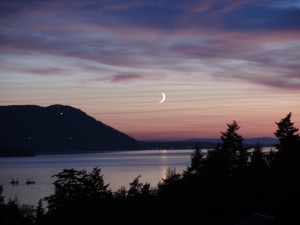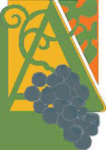lummi island wine tasting august 28 ’15
(note: some photos will enlarge when clicked)
Friday Breads (sign up for preorder list! )
 Toasted Pecan Flax Seed – Made with a rye sourdough culture and about 1/3 fresh milled whole wheat, toasted pecans and honey – $5/loaf.
Toasted Pecan Flax Seed – Made with a rye sourdough culture and about 1/3 fresh milled whole wheat, toasted pecans and honey – $5/loaf.
Heidebrot. Made with a 50% rye sourdough culture with coarse ground fresh milled rye. Try with cheese or smoked salmon. – $5/loaf
Pan de Cioccolate- “Chocolate bread”– sourdough with a bit of whole rye plus plenty of chocolate, honey, vanilla, chocolate chips and a touch of espresso. Not a “pastry,” but rather a whole chocolate loaf! –$5
Trebbiano di Lugano by any other name
 By a slight margin, Italy produces more wine than any other country– yes, including a slight edge on France. In addition Italy has more distinct grape varietals than any other country, with about 350 officially authorized in at least one region, and another 500 that exist but remain pretty obscure. Much of this cornucopia of varietals is due to Roman laws which prohibited growing wine grapes outside Italy beginning around the First Century AD.
By a slight margin, Italy produces more wine than any other country– yes, including a slight edge on France. In addition Italy has more distinct grape varietals than any other country, with about 350 officially authorized in at least one region, and another 500 that exist but remain pretty obscure. Much of this cornucopia of varietals is due to Roman laws which prohibited growing wine grapes outside Italy beginning around the First Century AD.
Trebbiano is a widely planted white wine grape, and accounts for about a third of all white wine made in Italy. However, this trebbiano has many faces, names, and characteristics. A recent DNA study concluded that at least seven grapes known as “trebbiano” are actually genetically distinct from one another, and do not have a common ancestor. It also found a strong genetic match between Trebbiano di Soave and Trebbiano di Lugana, but neither was strongly related to other “trebbianos.” Further, Trebbiano di Soave is genetically identical to Verdicchio, another common Italian grape, but Trebbiano di Lugana had only 97% DNA matchup to verdicchio.
Whew! The bottom line is that you can expect the Trebbiano di Lugana we are pouring this weekend to taste a lot like Verdicchio: clean, crisp, and minerally with notes of citrus and white peach. Read more
And now for something more familiar
 Yes, we all understand that by all the standards of Elsewhere, our summer has been just lovely. But we also all know that this summer has been drier, hotter, and longer than anyone around here can remember. Heck, it was only about three summers ago that it got warm enough to venture outside wearing shorts on occasion. This summer they have been the default uniform since sometime in May.
Yes, we all understand that by all the standards of Elsewhere, our summer has been just lovely. But we also all know that this summer has been drier, hotter, and longer than anyone around here can remember. Heck, it was only about three summers ago that it got warm enough to venture outside wearing shorts on occasion. This summer they have been the default uniform since sometime in May.
Today, however, the forecast started looking more familiar, with Rain forecast for the next three days, followed by Showers for the rest of the week. I have been living in these parts for forty years, and I still can’t give you any sort of precise distinction between Rain and Showers. By common practice, however, it seems to be both a matter of degree and intensity (yes, I am making this up). A forecast of Rain implies that it will be sort of continuous, while Showers suggests some kind of intermittency, with some dry periods and some brief rain events, i.e., “showers.”
For the sake of our trees, plants, and animals, we are all looking forward to a good rain. In addition, of course, a good saturating rain will be a welcome ally in the battle against the record numbers of forest fires currently blazing throughout the region…!
Pic St. Loup

I confess a certain infatuation with the little wine region of Pic St. Loup. The “Pic” is a 640-meter “tooth” of rock that dominates the French landscape for miles in every direction. At some mythic level, there is a powerful grounding energy here, as if there is something in the soil composition that makes gravity a little stronger, or as if the ancient gods of the place still have a Hand in the Game. It’s definitely about Power and Grounding.
The wines from this place, which must be predominantly syrah, grenache, and mourvedre (as in nearby Southern Rhone) have a certain gravitas. The vines must be at least six years old (not three) before being used for red wine (but are just fine for rosé!). The climate tends to be cooler and wetter than much of the Languedoc, which stretches in a band along the Mediterranean, while Pic St. Loup is open to more of the Atlantic climate from the north and west. This combination of soils and weather, along with whatever Magic is sown by the energy of the Pic itself, makes for wines that have an esoteric appeal that goes beyond the usual discussions of terroir, in the direction of something more Profound, archetypal, or, for lack of a better term, “spiritual.”
And yes, this is all a big Metaphor to describe my own personal affection for wines from this appellation. As always, of course, it is up to you to make up your own mind!
This week’s wine tasting
Ottella Lugana Bianco ’13 Italy $16
Trebbiano di Lugano (Turbiana). Intense straw yellow color with green tinges. Exotic notes of candied fruit and citrus, warm and very deep on the nose. Widespread expressive finesse, with rich and persistent texture.
Henri Favre Rose ’14 France $12
Pale orange. Aromas and flavors of peach, stone fruits, orange blossom on a crisp, minerally frame.
Writers Block Cab Franc ’12 California $14
Complex aromas of fresh dark berries, black cherry, plum, and a subtle brambly profile. Tobacco, chocolate, and herbal flavors blend with a floral component and notes of toasted oak.
Chateau la Roque Pic-St. Loup Rouge ’12 France $16
A lithe and expressive red, with fine balance and well-structured flavors of dried cherry, plum and boysenberry, featuring hints of tarragon and cream on the finish. Grenache, Syrah and Mourvèdre.
Setteporte Etna Rosso ’12 Sicily
95% Nerello Mascalese, 5% Nerello Cappuccio. Intense ruby red colour with a pleasantly fruity bouquet layered with red fruit and wild berries. The taste is dry, harmonious, elegant and persistent.
If you enjoyed this post, please consider to leave a comment or subscribe to the feed and get future articles delivered to your feed reader.

 2072 Granger Way
2072 Granger Way